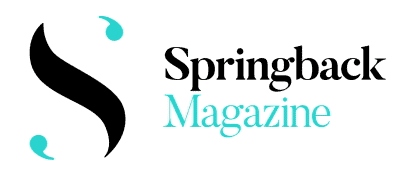Springback Academy 2018
Feature

What’s wrong with a solo?
It’s Sunday morning of Aerowaves festival. I’m lacking sleep, and my mind is already full to bursting with the sensory noise of thirteen new dance works over the past two days. Running on coffee and adrenalin (does anyone on earth truly enjoy public speaking?) I take part in a panel discussion titled ‘what’s wrong with a solo?’ and to me the answer is immediately obvious: the solo I want to see is not here.
Oona Doherty had been scheduled to perform Hope Hunt and the Ascension into Lazarus directly after the panel discussions that Sunday morning. Unfortunately, a knee injury prevented her from travelling to the festival. This was a great disappointment – I’d seen this work last year in Edinburgh, and by Sunday it was clear that it proposed something unique and much needed in the programme. Speaking with other critics confirmed my suspicion. We were weary not only with the walking and lack of sleep which characterised this satisfying marathon of a festival, but also with male/female duets (one on Friday, one on Saturday) in which heteronormative relationships were represented without being critiqued, and in which male violence towards women was depicted as an inevitable element. Our panel discussion quickly morphed into ‘what’s wrong with a duet?’.
Reviews of Rehearsals on Love and F63.9 available on the Springback website speak for themselves, but perhaps what was most disappointing about these duets was their lack of imagination. Hope Hunt, by contrast is dazzlingly inventive. Doherty arrives in a car, and freestyles in the street before marshalling the audience into the theatre. She dresses and dances as though she’s ‘male’. She speaks, repeatedly barking fragments of Belfast-accented text until they morph into urgently physical choreography. She is embodying an ‘other’ – the disadvantaged young men from the poorest areas of Belfast – in all their rawness, sexiness, vulnerability, and glamour. It is doubly radical because she is female, inhabiting a robust physicality which illuminates how unconsciously gendered choreographic choices often are. For me, no other work spoke to the frustration and anger which the duets provoked in myself and fellow critics. I missed Oona, because her solo could have redressed the balance.
Of the group works, interestingly three featured an all-male cast, and these were exciting in the ways they explored roles and relationships through movement. Homo Furens saw five men pushed to their limits in a military-style endurance test, while Dédale transported us to the gently erotic world of a male sauna. A clear hit of the festival was Compagnie Massala’s Nass (Les Gens) in which seven dancers bounced and pulsed together in ever-evolving formations, incorporating break-dance, hip-hop and Moroccan influences into a mesmerizing communion of male energy which brought the first roller-coaster day in Sofia to an ecstatic end.
There were nine solos in all, and many had plenty right with them. Hilde Ingeborg Sandvold’s Dans for Satan,and Núria Guiu Sagarra’s Likes both investigated identity and image in engaging ways. Jesús Rubio Gamo and Ingrid Berger Myhre each invited us into uniquely charming worlds. Only the male/female duets were stuck in a hopeless stereotype, making no progress.
What’s wrong with a solo? The solo wasn’t there. We needed Doherty’s hunt for hope and her ascension into new choreographic territory.

